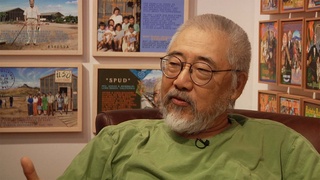Interviews
Leaving everything behind
I was 16 when we were relocated first of all to Tanforan and then to Topaz… we, like many other Japanese families, we were scared. We got rid of all our Japanese records and letters et cetera. Then when evacuation happened we left most everything just on the floor of this house and went to the assembly center.
Date: November 23, 2018
Location: California, US
Interviewer: Patricia Wakida
Contributed by: A Co-Production of the Watase Media Arts Center, Japanese American National Museum and KCET






